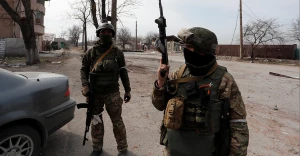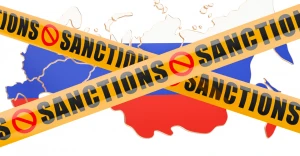
Behind the scenes of Fumio Kishida's visit to Ukraine
The Japanese Prime Minister's visit to Kyiv was very timely, actually hitting the bull's eye
It was hard to find a better political balance amid Chinese leader Xi Jinping's visit to Moscow. Especially given that the head of the Japanese government arrived in Kyiv not only in his national capacity, but also as the chairman of the G7. This in itself is a powerful signal for Moscow, Beijing, and the entire world.
According to our information, Fumio Kishida had long planned to visit Ukraine, but security conditions did not allow it. Both Kyiv needed this visit for obvious reasons and Tokyo, in particular, for internal reasons, such as the chance to improve the Japanese prime minister's falling political ratings. It is possible that the latter factor is the reason why this trip was called the 'first visit' of the Japanese prime minister to the war zone. In fact, it is the second, following Prime Minister Abe's visit to Kyiv in June 2015.
At the same time, we would like to draw attention to the Joint Statement on a Distinctive Global Partnership between Ukraine and Japan, which was agreed upon following the visit. As a consolidated result of the negotiations, it contains a number of elements that are invisible at first glance but crucial for the prospects of developing relations.
Now to be specific.
- First of all, Ukraine praised the “approval of the new National Security Strategy of Japan” in December 2022. As is well known, a fundamental change in the country's strategic course was the official recognition by Japan of the possibility of launching preemptive strikes against enemy bases and command posts. According to the aforementioned document, missile attacks against Japan “pose a real threat,” and the ability to counterattack is key to deterring neighbors such as China and North Korea.
- Furthermore, the joint document between Ukraine and Japan actually fixes the status quo regarding Taiwan, as it underscores “the importance of peace and stability in the Taiwan Strait area as an indispensable element of security and prosperity of the international community.” This is a very specific political statement, and an additional signal to the region from Ukraine.
“The joint document between Ukraine and Japan actually fixes the status quo regarding Taiwan, as it underscores ‘the importance of peace and stability in the Taiwan Strait area as an indispensable element of security and prosperity of the international community.’”
- Next, along with the previous two signals, the joint statement also calls for “respect for freedom of navigation and flight” in accordance with “international law, in particular the UN Convention on the Law of the Sea.” Here, as in the previous position, we are talking about the Indo-Pacific region. And this is quite a serious step.
- An equally important step is the consolidation of a common position on the situation in the East and South China Seas. Previously, such elements were not included in joint statements, indicating Kyiv's cautious, even-handed attitude to the situation in the region.
If we look at the elements that should have been included in the joint statement, but for some reason were not, there are several of them. And they are just as important.
- First, the bilateral partnership remained 'global' but not 'strategic.' Although we have been talking about the importance of formalizing the level of strategic partnership between our countries for years. Now was the right time to do it.
“The bilateral partnership remained 'global' but not 'strategic.' Although we have been talking about the importance of formalizing the level of strategic partnership between our countries for years. Now was the right time to do it.”
- Further, there is no mention of the Northern Territories of Japan. It would have been reasonable to see this in the text, as the Verkhovna Rada, in its Resolution of October 2022, clearly stated Ukraine's position that the Northern Territories belonging to Japan continue to be under Russian occupation. Moreover, our victory would also be a victory for Japan, with the corresponding consequences.
- Next, despite the global military support for Ukraine, including from Japan, the statement does not contain a single word about the development of military-technical cooperation. Back in 2018, the two countries signed a Memorandum on Defense. It would seem that the time has come when the foundations could be taken to a higher level.
- The document also lacks a position on joint action to bring Putin personally to justice for crimes in Ukraine. Especially after the G7 statement in December 2022 with such a call, and amid the ICC arrest warrant.
“The Japanese leader's visit was significant in the context of highlighting the global consequences of Russia's aggression against Ukraine. And this is certainly important in the struggle for the support of the global South.”
It should also be noted that the text does not contain any signals of support for the freezing of Russian assets, which seemed to be the 'iron common denominator.'
- Finally, it is difficult to explain why the text of the joint statement did not include any mention of the de-occupation of Crimea.
The Japanese leader's visit was significant in the context of highlighting the global consequences of Russia's aggression against Ukraine. And this is certainly important in the struggle for the support of the global South. The visits of the Indonesian leader as chairman of the G20 and now of Japan have established a good tradition of taking into account Ukraine's position in the global political landscape. The visit of the Japanese Prime Minister to Kyiv completes the cycle of visits of the G7 leaders to Ukraine on before the G7 summit in Hiroshima. So, let's hope for new promising decisions, a good basis for which has already been created.
Source
About the author: Ukrainian diplomat, Ambassador Extraordinary and Plenipotentiary of Ukraine.
The editors do not always share the opinions expressed by the authors of the blogs.
- News












































